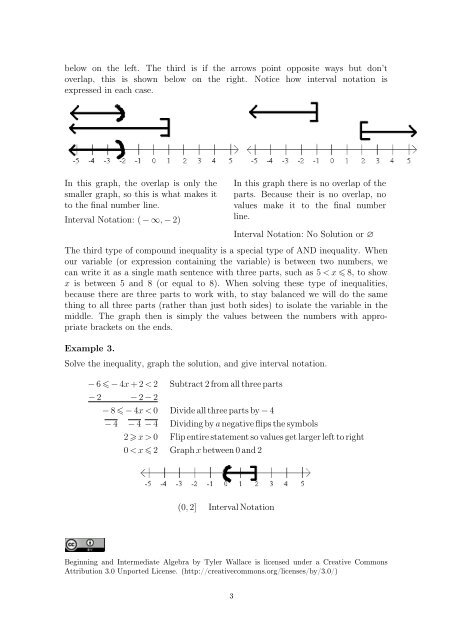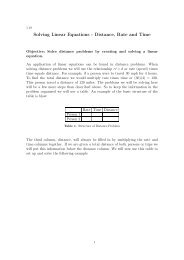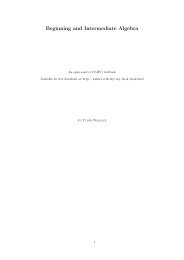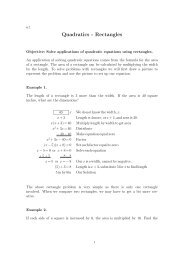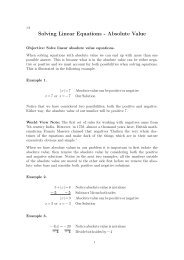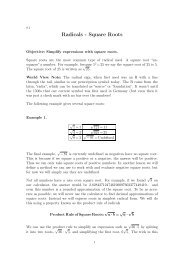Inequalities - Compound Inequalities - Wallace Math Courses
Inequalities - Compound Inequalities - Wallace Math Courses
Inequalities - Compound Inequalities - Wallace Math Courses
You also want an ePaper? Increase the reach of your titles
YUMPU automatically turns print PDFs into web optimized ePapers that Google loves.
elow on the left. The third is if the arrows point opposite ways but don’t<br />
overlap, this is shown below on the right. Notice how interval notation is<br />
expressed in each case.<br />
In this graph, the overlap is only the<br />
smaller graph, so this is what makes it<br />
to the final number line.<br />
Interval Notation: ( − ∞, − 2)<br />
In this graph there is no overlap of the<br />
parts. Because their is no overlap, no<br />
values make it to the final number<br />
line.<br />
Interval Notation: No Solution or ∅<br />
The third type of compound inequality is a special type of AND inequality. When<br />
our variable (or expression containing the variable) is between two numbers, we<br />
can write it as a single math sentence with three parts, such as 5 < x � 8, to show<br />
x is between 5 and 8 (or equal to 8). When solving these type of inequalities,<br />
because there are three parts to work with, to stay balanced we will do the same<br />
thing to all three parts (rather than just both sides) to isolate the variable in the<br />
middle. The graph then is simply the values between the numbers with appropriate<br />
brackets on the ends.<br />
Example 3.<br />
Solve the inequality, graph the solution, and give interval notation.<br />
− 6 � − 4x +2


